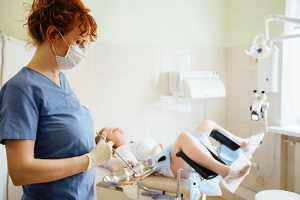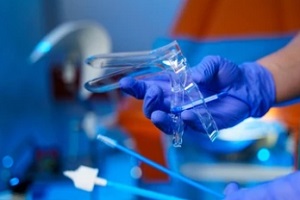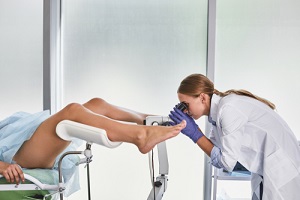 Although discomfort is not unusual in the days preceding and during your period, for some women, menstrual periods are consistently painful. This type of pain may fall under the umbrella of dysmenorrhea, a term that generally refers to pain that accompanies menstruation or menstrual cramps.
Although discomfort is not unusual in the days preceding and during your period, for some women, menstrual periods are consistently painful. This type of pain may fall under the umbrella of dysmenorrhea, a term that generally refers to pain that accompanies menstruation or menstrual cramps.
Types of Dysmenorrhea
There are two types of dysmenorrhea: primary and secondary.
Primary Dysmenorrhea
Common menstrual cramps that recur each month and are not caused by other diseases is known as primary dysmenorrhea. For many women with this condition, the pain begins a day or two prior to their period; for others, it may come when the actual bleeding begins. The pain may be mild to severe and occur in your lower abdomen, thighs, or back.
The pain may last anywhere from 12 to 72 hours and might be accompanied by symptoms such as fatigue, diarrhea, nausea, and vomiting. The good news for many women with primary dysmenorrhea is that their cramps may become less painful as they get older and could stop entirely after having a baby.
Secondary Dysmenorrhea
Another type of dysmenorrhea is secondary dysmenorrhea. This occurs when a woman’s painful periods are caused by a disorder or an infection of the reproductive organs. It is not typically accompanied by fatigue, diarrhea, nausea, or vomiting, and it may begin earlier in a woman’s menstrual cycle and last longer than typical menstrual cramps.
The menstrual pain that results from secondary dysmenorrhea could be tied to one of the following reproductive organ conditions:
Adenomyosis
In this condition, the lining of the uterus grows into the muscle, causing it to grow bigger than normal and spurring abnormal bleeding and pain.
Pelvic Inflammatory Disease
 PID is an infection that is caused by bacteria that begins in the uterus and may spread to other reproductive organs. It can cause pain during sex and stomach pain in addition to painful periods.
PID is an infection that is caused by bacteria that begins in the uterus and may spread to other reproductive organs. It can cause pain during sex and stomach pain in addition to painful periods.
Fibroids
These are benign growths that may be found on the inside or outside of the uterus.
Endometriosis
With endometriosis, the tissue lining the uterus is situated outside of the uterus. These tissue pieces bleed during a woman’s period, leading to pain, swelling, and scarring.
Diagnosis Of Dysmenorrhea
Diagnosing dysmenorrhea can be difficult because menstrual cramps are common. However, if you are feeling pressure or aching pain in the abdomen that is severe at times and/or pain in your lower back, inner thighs, or hips, and you believe that your cramps are unusual or severe and last longer than three days, get in touch with a healthcare provider.
Your doctor will ask you to describe your menstrual cycles and your symptoms and may perform a pelvic exam to check for other issues. If your doctor suspects secondary dysmenorrhea, you may also need an ultrasound or other diagnostic tests to determine the condition behind your painful periods so that it can be treated.
How To Relieve Menstrual Cramps
Treating primary dysmenorrhea can be challenging because it is not caused by a specific medical condition. Here is a look at some of the ways you may be able to get some relief. What works for one woman will not necessarily work for another, so it may take some trial and error to find the best approach for you.
Pain Relief Medication
Many doctors recommend taking ibuprofen when your cramping starts. As a nonsteroidal anti-inflammatory drug, or NSAID, ibuprofen reduces the output of prostaglandin, which causes the uterus to contract. Naproxen is another NSAID that offers better relief for some women. If you are unable to take drugs in this category, a pain reliever like acetaminophen may also work.
Massage
Some women find that a massage of the lower back and abdomen can help relieve menstrual cramps.
Dietary Changes
If you suffer from menstrual cramps, avoiding any type of food or beverage that contains caffeine, as well as alcohol, can offer some relief.
Heat
Placing a hot water bottle or a heating pad on your abdomen or lower back can take the edge off of menstrual cramps.
Relaxation
 If your menstrual cramps are particularly intense, make sure you get plenty of rest and do not overexert yourself. Structured relaxation breathing exercises may also be helpful.
If your menstrual cramps are particularly intense, make sure you get plenty of rest and do not overexert yourself. Structured relaxation breathing exercises may also be helpful.
Exercise
Exercise might be the last thing you feel like doing when you’re experiencing menstrual cramps. However, studies show that women who exercise regularly may experience less menstrual pain, so consider making exercise a part of your weekly routine to help prevent cramps.
Hormonal Contraceptives
Women who take hormonal contraceptive medications tend to experience less menstrual pain, so your healthcare provider might suggest that you take these drugs if other approaches do not provide relief. This could include options like a birth control pill, contraceptive patches or vaginal rings or even a progestin based intrauterine device (IUD). Your gynecologist can discuss which options may be most appropriate for you to try.
Contact Raleigh Gynecology & Wellness
If you are suffering from painful periods, reach out to the friendly team of women’s health professionals at Raleigh Gynecology & Wellness. We can help you determine the cause of your menstrual pain and get it under control so you don’t have to put your life on hold when your period comes each month.


 Weight can also play a role with women who are severely underweight, malnourished, or suffering from eating disorders, such as women with anorexia nervosa or bulimia often experiencing oligomenorrhea.
Weight can also play a role with women who are severely underweight, malnourished, or suffering from eating disorders, such as women with anorexia nervosa or bulimia often experiencing oligomenorrhea. Menstruation can be a challenging time of the month for many women. Between the symptoms of
Menstruation can be a challenging time of the month for many women. Between the symptoms of 
 It is important to keep in mind that just one missed cycle or light flow is not usually a problem. Moreover, oligomenorrhea is not considered serious on its own. It may be possible to adjust your menstrual period with help from hormonal birth control or progestin.
It is important to keep in mind that just one missed cycle or light flow is not usually a problem. Moreover, oligomenorrhea is not considered serious on its own. It may be possible to adjust your menstrual period with help from hormonal birth control or progestin.  A pelvic
A pelvic  During this exam,your doctor gently slides a special tool called a
During this exam,your doctor gently slides a special tool called a  If you are a healthy, adult woman, you should have a pelvic exam every year. However, you may need to have one more frequently if there are any abnormalities in your pelvic area, such as any one or more of the following conditions:
If you are a healthy, adult woman, you should have a pelvic exam every year. However, you may need to have one more frequently if there are any abnormalities in your pelvic area, such as any one or more of the following conditions: Your
Your  If your period is troubling you in any way, whether you have a
If your period is troubling you in any way, whether you have a  Some women may bleed so heavily during their period that they need to put their normal lives on hold so they can address the heavy blood flow. If you must change your tampon or pad every hour instead of three or four times a day, you may be experiencing heavy menstrual bleeding.
Some women may bleed so heavily during their period that they need to put their normal lives on hold so they can address the heavy blood flow. If you must change your tampon or pad every hour instead of three or four times a day, you may be experiencing heavy menstrual bleeding.